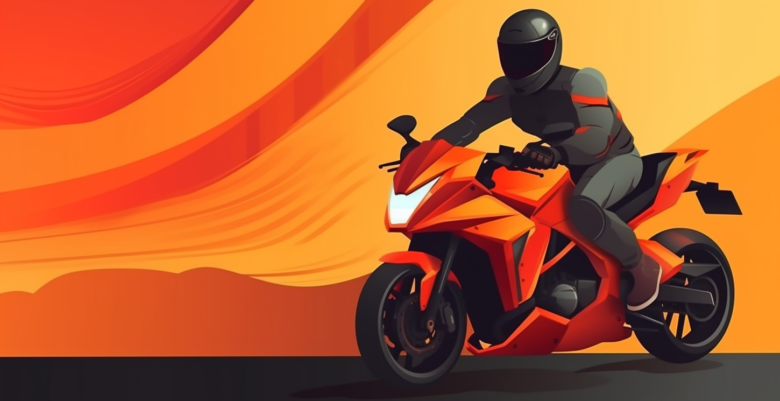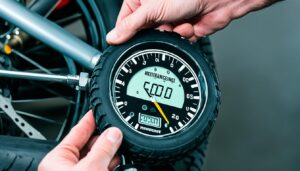Riding a motorcycle can be an exhilarating experience, but it also comes with risks. Did you know that motorcyclists are 28 times more likely to die in a traffic accident than people in a car?
So, what can you do to protect yourself and enjoy the freedom of the open road? This article will explore essential tips for safer motorcycle riding, from taking safety courses to inspecting your bike before a ride. Discover how these tips can help you minimize risks and ensure a more secure riding experience.
Take a Safety Course
Taking a safety course is crucial for new motorcyclists and even experienced riders. These courses provide valuable knowledge and training that can significantly improve your motorcycle riding skills and enhance your overall safety on the road.
Enrolling in a motorcycle riding class teaches you the essential rules and regulations specific to motorcycles. You will also gain a deeper understanding of how to navigate through traffic and handle various riding situations. The instructors, who are often experienced riders themselves, teach you techniques for maneuvering safely in different weather conditions and on different types of roads.
During these courses, you can practice crucial motorcycle riding skills, such as braking, turning, and defensive riding. By receiving professional guidance and feedback, you can refine your techniques and develop the confidence to handle unpredictable situations effectively. Additionally, the instructors will provide valuable insights and tips for maintaining control, improving stability, and optimizing your overall riding performance.
Furthermore, safety courses may focus on specific skills, such as advanced turning techniques or collision avoidance maneuvers. These specialized courses can help experienced riders hone their abilities and take their riding skills to the next level.
The Benefits of Motorcycle Riding Classes:
- Gain a deeper understanding of motorcycle safety and traffic regulations
- Learn essential riding techniques and maneuvers
- Improve your ability to handle unpredictable riding situations
- Enhance confidence and overall riding performance
- Receive professional guidance and feedback
- Develop advanced skills through specialized courses
By investing time and effort in a safety course, you improve your motorcycle riding skills and create a safer riding environment for yourself and others on the road. Remember, safety should always be a top priority when enjoying the thrill of motorcycling.
Check the Weather Before Heading Out
Before embarking on a motorcycle ride, it is crucial to check the weather conditions. The weather can significantly impact your safety and overall riding experience. Rain, ice, and snow can make the ride hazardous by reducing traction and visibility. Riding in inclement weather increases the risk of accidents and compromises your control over the motorcycle.
Checking the weather forecast can help you decide whether it is safe to proceed with your ride. If unfavorable conditions are predicted, it is advisable to delay your trip and choose a different day for your motorcycle road trip. This will ensure a safer and more enjoyable experience.
Here are some key reasons why checking the weather is crucial:
- Safety: Inclement weather conditions can pose significant challenges when riding. Avoiding riding during rain, ice, or snow reduces the risk of accidents and allows you to maintain better control over your motorcycle.
- Visibility: Poor visibility due to fog, heavy rain, or snow can make it challenging for other drivers to see you on the road. Checking the weather allows you to plan your ride during optimal visibility conditions, minimizing the chance of accidents.
- Traction: Rain, ice, and snow decrease traction and increase the likelihood of skidding or sliding. These conditions require advanced motorcycle riding techniques and skills to navigate safely. Choosing the right weather conditions allows you to ride on surfaces with better traction, reducing the risk of accidents.
Always check the weather before heading out on your motorcycle. You can enjoy a smooth and worry-free ride by prioritizing safety and making informed decisions.
Wear Motorcycle Gear
In motorcycle riding, wearing the right gear is crucial for rider safety. Investing in the best gear can provide you with the necessary protection and comfort for a safe and enjoyable ride. Here are the essential pieces of gear every rider should have:
- DOT-approved helmet: Protect your head from potential injuries by wearing a helmet that meets the U.S. Department of Transportation (DOT) safety standards.
- Goggles: Wear goggles or a visor-equipped helmet to shield your eyes from wind, debris, and insects.
- Leather jacket: Opt for a high-quality leather jacket that offers abrasion resistance and added protection for your upper body.
- Leather pants or chaps: Ensure your lower body is well-protected by wearing leather pants or chaps that provide additional abrasion resistance.
- Over-the-ankle boots: Choose sturdy boots that cover your ankles to provide protection and proper support while riding.
- Non-slip gloves: These gloves enhance your grip on the handlebars and protect your hands from potential injuries.
Additionally, dressing in layers allows for flexibility in adjusting to changing weather conditions throughout the ride. You can add or remove clothing as needed to stay comfortable and maintain proper body temperature while on the road.
Inspect Your Motorcycle Before Each Ride
Before you embark on any motorcycle ride, it is crucial to inspect your motorcycle thoroughly to ensure that it is in proper working condition. Regular maintenance and inspections contribute to safer rides, preventing potential breakdowns on the road. To provide a smooth and secure ride, follow these essential tips:
- Check the lights: Examine the headlights, taillights, and turn signals to ensure they function correctly. Proper lighting is crucial for visibility, both during the day and at night.
- Brake inspection: Test the brakes to ensure they are responsive and in good working order. Faulty brakes can impair your ability to stop quickly and safely.
- Fluid levels: Check the fuel and oil levels to ensure they are sufficient for your ride. Inadequate levels can lead to engine problems, stranding you on the road.
- Tire pressure: Proper tire pressure is essential for optimal traction and handling. Check the tire pressure using a gauge and adjust as necessary.
- Mirror adjustment: Ensure the mirrors are correctly adjusted to provide a clear view of the road and surrounding traffic.
- Handlebar alignment: Check the handlebars for proper alignment and ensure they are secure. Loose or misaligned handlebars can affect your control over the motorcycle.
- Horn functionality: Test the horn to ensure it is working correctly. The horn is an essential safety feature that alerts other drivers of your presence.
By following these guidelines and regularly inspecting your motorcycle, you can help maintain its longevity and ensure a safe and enjoyable ride for yourself and the motorcycle riding community.
Obey Traffic Rules and Be Visible
Regarding motorcycle safety, there are two essential aspects to consider: obeying traffic rules and making yourself visible to other drivers. Adhering to traffic regulations, using signals, and driving within the speed limit can significantly reduce the risk of accidents and ensure a safer riding experience.
However, it’s not just about following the rules; it’s also about making yourself easily seen on the road. To enhance your visibility, there are several measures you can take:
- Avoid riding in blind spots, as this increases the chance of other drivers not seeing you.
- Use your headlights, even during the daytime. This will help you stand out and make it easier for others to spot you.
- Wear reflective or brightly colored clothing. This will improve your visibility and make you more conspicuous to others on the road.
- Always use turn signals and hand signals to communicate your intentions to others. This helps prevent confusion and reduces the likelihood of accidents.
By obeying traffic rules and increasing your visibility, you can significantly enhance your safety on the road. These practices benefit you and contribute to the overall well-being and harmony of the motorcycle-riding community.
Be Observant and Watch for Road Hazards
As a motorcyclist, practicing defensive driving is crucial for your safety on the road. It entails staying vigilant and anticipating potential road hazards that harm your traction and stability. Being observant and proactive can avoid accidents and ensure a smoother riding experience.
Here are some essential motorcycle riding techniques to help you navigate road hazards:
- Stay vigilant: Keep your eyes on the road ahead and be aware of any potential hazards that may arise. Pay attention to changes in road surfaces, curves, intersections, and other environmental factors that could affect your safety.
- Anticipate road hazards: Be prepared for common road hazards such as sand, oil spills, gravel, bumps, and potholes. These hazards can reduce your traction and stability, making it essential to adjust your riding accordingly.
- Cross railroad tracks with caution: When encountering railroad tracks, approach them at an appropriate angle to ensure a smooth and safe crossing. The tracks can be slippery and cause loss of traction, so maintaining control is essential.
- Maintain awareness of your surroundings: Always be mindful of the traffic and maintain a safe distance from other vehicles. This will give you ample time to react to sudden changes or incidents on the road.
Adopting these motorcycle riding techniques and staying observant of road hazards can enhance your safety and reduce the risk of accidents. Remember, defensive driving is a vital skill that every motorcyclist should prioritize for a secure and enjoyable riding experience.
Stay at a Safe Distance and Carry a First-Aid Kit
Safety should always be a top priority when riding a motorcycle. Two essential practices that can contribute to a safer riding experience are maintaining a safe distance from the vehicle in front of you and carrying a first-aid kit.
Maintaining a safe distance from the vehicle ahead gives you enough stopping time in emergencies. This distance, known as the “two-second rule,” should be maintained even in optimal weather and road conditions. Keep track of the vehicle before you and ensure you have enough space to react and stop safely if necessary.
Carrying a first-aid kit is another crucial aspect of motorcycle safety. Minor injuries can happen during a ride, and having a basic first-aid kit can help address them promptly. Your kit should include disinfecting wipes, bandages, hand sanitizer, gauze, adhesive tape, and Band-Aids. Having these supplies readily available allows you to take immediate action to treat minor wounds and prevent them from escalating.
By staying at a safe distance and being prepared with a first-aid kit, you can enhance your safety on the road and mitigate potential risks. These practices are part of responsible motorcycle riding and contribute to the overall benefits of enjoying the open road on two wheels.
Take an Advanced Riding Course
Enhancing your riding skills by taking an advanced riding course can significantly improve your overall safety and proficiency on a motorcycle. These courses provide instruction on collision avoidance maneuvers, advanced turning techniques, control tips, and braking techniques. Continued practice and learning contribute to safer motorcycle riding.
Conclusion
Following these essential tips for safer motorcycle riding can enhance your skills, minimize risks, and enjoy a more secure riding experience. Prioritizing safety is paramount in the world of motorcycle riding. Whether you are a new motorcyclist or an experienced rider, continuously improving your riding skills is crucial for your safety and the safety of others on the road.
It is also important to stay informed about the latest safety practices in the motorcycle-riding community. Stay updated on new laws, regulations, and technological advancements in motorcycle safety. Joining online forums and engaging with fellow riders can provide valuable insights and knowledge to enhance your riding experience.
Remember, safe riding leads to enjoyable rides and unforgettable adventures. So gear up with the proper motorcycle gear, take safety courses to sharpen your skills, and always abide by traffic rules. By adopting these habits and remaining vigilant on the road, you can create a safer environment for yourself and other riders, making motorcycle riding a truly exhilarating experience.
FAQ
Why is taking a safety course important for motorcycle riders?
Safety courses teach the road rules for motorcycles and provide training on handling unpredictable riding situations. This helps riders improve their skills and ride safely and confidently.
Why is it important to check the weather before riding a motorcycle?
Checking the weather allows riders to avoid hazardous conditions such as rain, ice, and snow, which can reduce traction and visibility. Choosing a different day for a ride ensures a safer and more enjoyable experience.
What gear should motorcyclists wear for safety?
Motorcyclists should wear a DOT-approved helmet, goggles, a leather jacket, leather pants or chaps, over-the-ankle boots, and non-slip gloves. Dressing in layers allows for adjustments to changing weather conditions during the ride.
Why is it essential to inspect your motorcycle before each ride?
Regularly inspecting your motorcycle ensures that it is in proper working condition. Checking components such as headlights, brakes, and tires helps prevent breakdowns and provides a safer ride.
What are some essential traffic rules and visibility tips for motorcycle riders?
Motorcycle riders should obey traffic rules, use signals, and drive within the speed limit. To increase visibility, they should avoid blind spots, use headlights and reflective clothing, and always use turn and hand signals.
Why should motorcycle riders be observant and watch for road hazards?
Being observant allows riders to anticipate road hazards such as sand, oil, bumps, and potholes, which can decrease traction and stability. By staying aware of their surroundings, riders can avoid accidents.
Why is maintaining a safe distance and carrying a first-aid kit crucial for motorcycle riders?
Maintaining a safe distance from the vehicle in front allows for appropriate emergency stopping time. Carrying a first-aid kit helps address minor injuries that may occur during a ride.
How can taking an advanced riding course benefit motorcycle riders?
Advanced riding courses enhance overall safety and proficiency on a motorcycle by teaching collision avoidance maneuvers, advanced turning techniques, control tips, and braking techniques. Continued learning improves riding skills.
How can following these tips enhance motorcycle riding safety?
By following these essential tips, riders can improve their skills, minimize risks, and have a more secure riding experience. Prioritizing safety, continuous improvement, and staying informed contribute to enjoyable and safe rides.



